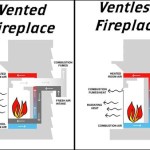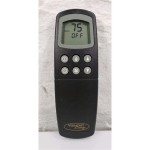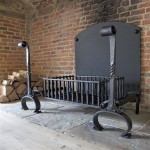Free Standing Wood Fireplaces: A Comprehensive Guide
Free-standing wood fireplaces, also known as wood stoves, are heating appliances that stand independently within a room, providing warmth and aesthetic appeal. These fireplaces offer an alternative to traditional masonry fireplaces and offer greater flexibility in terms of placement and installation. Understanding the features, benefits, and considerations associated with free-standing wood fireplaces is essential for homeowners seeking an efficient and aesthetically pleasing heating solution.
The history of free-standing wood fireplaces traces back centuries, evolving from simple iron stoves to sophisticated heating systems. Early versions were primarily utilitarian, focused on providing heat and cooking capabilities. Over time, designs have been refined to incorporate decorative elements, improved combustion technology, and enhanced safety features. Modern free-standing wood fireplaces are designed to meet stringent environmental regulations and efficiency standards, making them a viable option for supplemental heating in many homes.
This guide will explore the various aspects of free-standing wood fireplaces, including their advantages, types, installation requirements, maintenance needs, and safety considerations. By understanding these factors, homeowners can make informed decisions when selecting and using a free-standing wood fireplace in their homes.
Key Point 1: Advantages of Free-Standing Wood Fireplaces
Free-standing wood fireplaces offer several advantages over other heating systems and traditional masonry fireplaces. These benefits contribute to their popularity among homeowners seeking efficient, aesthetically pleasing, and versatile heating options.
Efficiency: One of the primary advantages of free-standing wood fireplaces is their efficiency. Modern wood stoves are designed to maximize heat output while minimizing fuel consumption. They achieve this through advanced combustion technologies that burn wood more completely, reducing emissions and increasing heat transfer. Many models are EPA-certified, meaning they meet strict emission standards and offer high heating efficiency. This efficiency translates to lower heating costs compared to some other heating methods.
Cost-Effectiveness: Using wood as a primary or supplemental heating source can be more cost-effective than relying solely on electricity, gas, or oil, especially in areas where wood is readily available and affordable. While the initial investment in a free-standing wood fireplace may be significant, the long-term savings on heating bills can offset the cost. Furthermore, the price of wood tends to be less volatile than the prices of fossil fuels, providing a more predictable heating expense.
Aesthetic Appeal: Beyond their functional benefits, free-standing wood fireplaces add a touch of warmth and ambiance to a room. They come in a wide range of styles, from traditional to contemporary, allowing homeowners to choose a model that complements their home décor. The visible flames and crackling sounds of burning wood create a cozy and inviting atmosphere. The aesthetic appeal can enhance the enjoyment of a living space and increase the overall value of a home. Many models offer features such as large viewing windows to maximize the visual impact of the fire.
Zone Heating: Free-standing wood fireplaces provide effective zone heating, allowing homeowners to focus heat in specific areas of their homes. This is particularly useful for heating frequently used rooms, reducing the need to heat the entire house. Zone heating can lead to significant energy savings, as it avoids wasting energy on heating unoccupied spaces. It also allows for greater temperature control in different areas of the home, catering to individual preferences and needs.
Independence from Utility Grids: During power outages or other emergencies, free-standing wood fireplaces offer a reliable source of heat. Unlike electric or gas furnaces that require a functioning utility grid, wood stoves can operate independently, providing warmth and comfort during challenging situations. This independence can be particularly valuable in areas prone to severe weather conditions or prolonged power disruptions. Having a backup heating source can provide peace of mind and ensure comfort during emergencies.
Key Point 2: Types and Features of Free-Standing Wood Fireplaces
Free-standing wood fireplaces are available in various types, each offering specific features and benefits. Understanding the different options can help homeowners select a model that best suits their needs and preferences.
Cast Iron Stoves: Cast iron stoves are known for their durability and heat retention capabilities. Cast iron is an excellent material for absorbing and radiating heat, providing consistent and even warmth. These stoves typically have a classic or traditional design, often featuring intricate details and decorative elements. Cast iron stoves can be heavier and more expensive than some other types, but their longevity and performance make them a popular choice.
Steel Stoves: Steel stoves are generally lighter and more affordable than cast iron stoves. They heat up more quickly but also cool down faster. Steel stoves often have a more contemporary or modern design, with clean lines and minimalist aesthetics. They are a good option for homeowners who prioritize quick heating and budget-friendliness.
Soapstone Stoves: Soapstone stoves combine the benefits of both cast iron and steel stoves. Soapstone is a natural material that is excellent at retaining and radiating heat. It provides a gentle and even heat that can last for hours after the fire has died down. Soapstone stoves are often more expensive than other types, but their superior heat retention and unique aesthetic appeal make them a desirable option.
Catalytic and Non-Catalytic Stoves: Catalytic stoves use a catalytic combustor to burn off gases and particles that would otherwise escape up the chimney as smoke. This results in cleaner burning, higher efficiency, and reduced emissions. Non-catalytic stoves rely on other design features to achieve efficient combustion, such as precise air control and baffle systems. Catalytic stoves typically require more maintenance, as the catalytic combustor needs to be replaced periodically. Non-catalytic stoves are simpler to operate and maintain but may not be as efficient as catalytic models.
Firebox Size and BTU Output: The size of the firebox and the British Thermal Unit (BTU) output of a wood stove are important factors to consider when choosing a model. A larger firebox allows for longer burn times, reducing the need to frequently reload the stove. The BTU output indicates the amount of heat the stove can produce. Choosing a stove with the appropriate BTU output for the size of the room or area you are trying to heat is crucial for optimal performance.
Air Wash System: An air wash system is a feature that uses a stream of air to keep the glass viewing window clean, providing an unobstructed view of the flames. This feature is desirable for homeowners who appreciate the aesthetic appeal of a wood-burning fire. The air wash system helps prevent soot and creosote from building up on the glass, maintaining a clear view.
Key Point 3: Installation, Maintenance, and Safety Considerations
Proper installation, regular maintenance, and adherence to safety guidelines are essential for the safe and efficient operation of a free-standing wood fireplace. These considerations help prevent hazards and ensure the longevity of the appliance.
Professional Installation: While some homeowners may be tempted to install a free-standing wood fireplace themselves, professional installation is strongly recommended. A qualified installer can ensure that the stove is properly connected to a chimney or flue, that it meets all local building codes and regulations, and that it is safely positioned in the room. Incorrect installation can lead to fire hazards, carbon monoxide poisoning, and other serious risks.
Chimney or Flue Requirements: A properly sized and maintained chimney or flue is crucial for venting smoke and gases safely out of the home. The chimney or flue should be inspected annually by a qualified professional to ensure that it is free of obstructions and in good condition. Creosote buildup in the chimney is a common hazard and can lead to chimney fires. Regular cleaning is necessary to remove creosote and prevent fires. The chimney should be compatible with the wood stove in terms of size and materials.
Clearances to Combustible Materials: Free-standing wood fireplaces generate significant heat, and it is essential to maintain adequate clearances between the stove and any combustible materials, such as walls, furniture, and curtains. Manufacturers typically specify minimum clearance requirements in their installation manuals. These clearances should be strictly adhered to in order to prevent fires. Using heat shields can reduce the required clearances in some cases.
Smoke Detectors and Carbon Monoxide Detectors: It is imperative to install and maintain working smoke detectors and carbon monoxide detectors in the home, especially when using a wood-burning appliance. Smoke detectors provide early warning of fires, while carbon monoxide detectors alert occupants to the presence of this odorless and deadly gas. Detectors should be tested regularly and batteries should be replaced as needed.
Proper Wood Storage and Handling: Store firewood in a dry, well-ventilated area away from the house. Avoid storing wood indoors for extended periods, as it can attract pests and increase the risk of mold growth. Only burn seasoned wood, which has been dried for at least six months. Burning unseasoned wood produces more smoke and creosote, reducing efficiency and increasing the risk of chimney fires. Handle firewood carefully to avoid injuries, such as splinters or back strain.
Regular Maintenance: Regular maintenance is essential for keeping a free-standing wood fireplace in good working condition. This includes cleaning the stove, inspecting and cleaning the chimney, and replacing worn parts as needed. The frequency of maintenance will depend on the usage of the stove and the type of wood burned. Consult the manufacturer's manual for specific maintenance recommendations. Professional chimney sweeps can provide thorough cleaning and inspection services.

Freestanding Wood Burning Stoves Sierra Hearth And Home
Dru Fire

Studio 2 Freestanding Wood Burning Stove Stovax Stoves
Dru Fire

Wood

What Is A Freestanding Wood Stove Fireplace Service Experts

Adf 1000 Nmv Freestanding Wood Fireplace Hawkesbury Heating

Wood

Suspended Fashion Indoor Freestanding Wood Burning Stove China Weather Resistant Fireplaces Made In Com

Freestanding Wood Burning Stoves Hearth And Home
Related Posts








